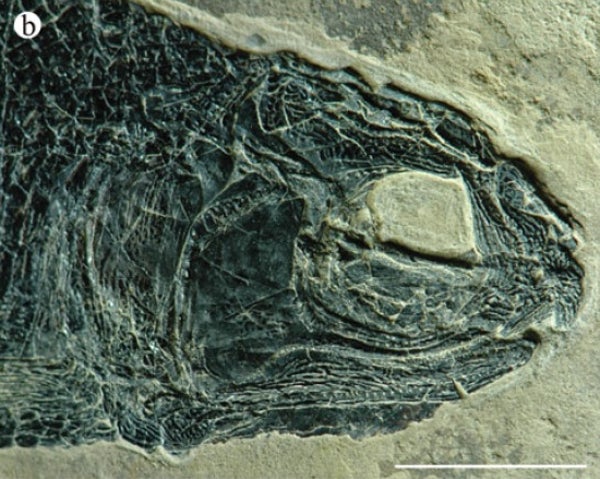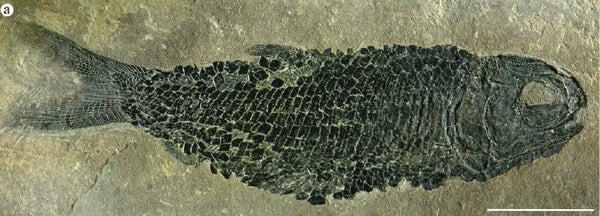This article was published in Scientific American’s former blog network and reflects the views of the author, not necessarily those of Scientific American
Prehistoric weirdos get all the press. The evidence is undeniable. Find even part of a new dinosaur and you've got an animal ready to make a splash. But find something more familiar and that new species may not even ripple across the surface of public consciousness.
Paleontologist and essayist Stephen Jay Gould recognized this long before I did. Forms of prehistoric life that are unusual, or seem to be anatomically distant from other species, get far more attention than lineages that have been, and remain, successful. Antelope, bats, and rodents, Gould pointed out, are hardly ever discussed as epitomes of evolution. Instead we focus on relatively simple stories - like how horses went from multi-toed forest dwellers to single-toed inhabitants of the plains - or on animals that stand out in sharp contrast against what we're familiar with.
But it's important that we turn away from super-sized dinosaurs and snaggletoothed marine reptiles now and then. Fossil life isn't solely made up of the superlative and the strange. Consider, for example, a new species of fossil fish found in the roughly 245-million-year-old rock of China.
On supporting science journalism
If you're enjoying this article, consider supporting our award-winning journalism by subscribing. By purchasing a subscription you are helping to ensure the future of impactful stories about the discoveries and ideas shaping our world today.
Paleontologist W. Wen and colleagues have named the Triassic swimmer Platysiagum sinensis on the basis of four beautifully-complete specimens found in Yunnan Province. These fish made it to our present time with almost every bone and scale still in place, fossilized in shiny black.
These aren't quite like the sunnies you'll find down at the local pond. Platysiagum sinensis belonged to an extinct group of fish called platysiagids. And, in their analysis, Wen and colleagues place these fish near the base of a major group called the Neopterygii - the huge assemblage of fish that includes everything from gulper eels to bass. And in broader evolutionary terms, these fish were part of the vibrant recovery of life during the early chapters of the Triassic. Fish such as these set the foundation for what would come later.
But my purpose in highlighting Platysiagum sinensis is simply that it's not a dinosaur. It's not a Mesozoic weirdo that's going to become a household name. In the paleontological popularity contest, unusual and rare will beat out familiar or common every time. That's not going to change. Still, we can pause now and then and look past the snarling saurians to some of their neighbors, even as just a reminder that the there's more to life than being big, scary, and voracious.

A close-up of another specimen of Platysiagum sinensis. Credit: Wen et al 2018
Name: Platysiagum sinensis
Meaning: Platysiagum is an existing-genus of Triassic fish, and the new species name sinensis means "from China."
Age: Triassic, around 245 million years old.
Where in the world?: Yunnan Province, China.
What sort of organism?: A bony fish belonging to a group called platysiagids.
How much of the organism’s is known?: Four skeletons with scales.
Reference:
Wen, W., Hu, S., Zhang, Q., Benton, M., Kriwet, J., Chen, Q., Zhou, C., Xie, T., Huang, J. 2018. A new species of Platysiagum from the Luoping Biota (Anisian, Middle Triassic, Yunnan, South China) reveals the relationship between Platysiagidae and Neopterygii. Geological Magazine. doi: 10.1017/S0016756818000079
More Paleo Profiles:
The Light-Footed Lizard The Maoming Cat Knight’s Egyptian Bat The La Luna Snake The Rio do Rasto Tooth Bob Weir's Otter Egypt's Canine Beast The Vastan Mine Tapir Pangu's Wing The Dawn Megamouth The Genga Lizard The Micro Lion The Mystery Titanosaur The Echo Hunter The Lo Hueco Titan The Three-Branched Cicada The Monster of Minden The Pig-Footed Bandicoot Hayden's Rattlesnake Demon The Evasive Ostrich Seer The Paradoxical Mega Shark The Tiny Beardogs The Armored Fish King North America's Pangolin The Invisible-Tusked Elephant The Mud Dragon The Spike-Toothed Salmon The Dream Coast Crocodile Buriol's Robber Ozimek's Flyer The Northern Naustoceratopsian The High Arctic Flyer The Tomatillo From the End of the World The Short-Faced Hyena The Mighty Traveler from Egg Mountain Keilhau's Ichthyosaur Mexico's Ancient Horned Face Mauricio Fernández's Plesiosaur New Zealand's Giant Dawn Penguin The Orange Sea Lion Mongolia's Ginkgo Cousin The Geni River Frog Isabel Berry's Dinosaur The Whale Caiman The Moab Lizard Yang Zhongjian's Lizard The Little Anubis The Shuangbai Lizard The Wyvern Dinosaur The "Need Helmet" Dinosaur The Jianianhua Dragon The Liaoning Hunter The Dalian Lizard Crompton's Aleodon Jenkins' Amphibian Serpent From the Chinle The Large Ancestor Lizard The Crown Tooth Currie's Alberta Hunter The Elephant Bird Mimic The Crested Thief The Hiding Hunter The Horned Lizard The Silk Bird The Sieve-Toothed Plesiosaur The Defenseless Snout Burian's Lizard The Small Whaitsiid The Beautiful Bird The Fierce Cat The Older One From Melksham The King of the Miocene Iberian Giraffes Miera's Lizard The Traveling Sloth The Sand Whale Shouten's Marsupial Lion The Rhaetian Lizard The Mountain Dolphin The Bryant's Shark The Rainbow Dinosaur Kootenay Bristle Worm The Masaoura Lizard The Chimera Spider The Chad Cat The Jinyun Shield
